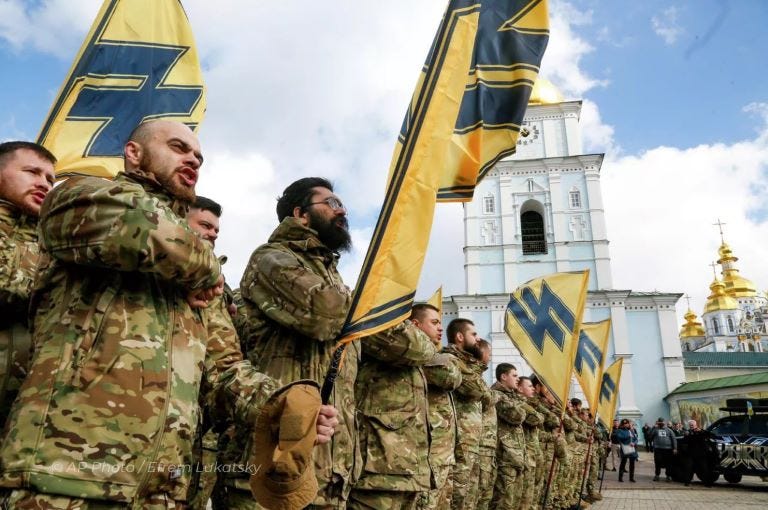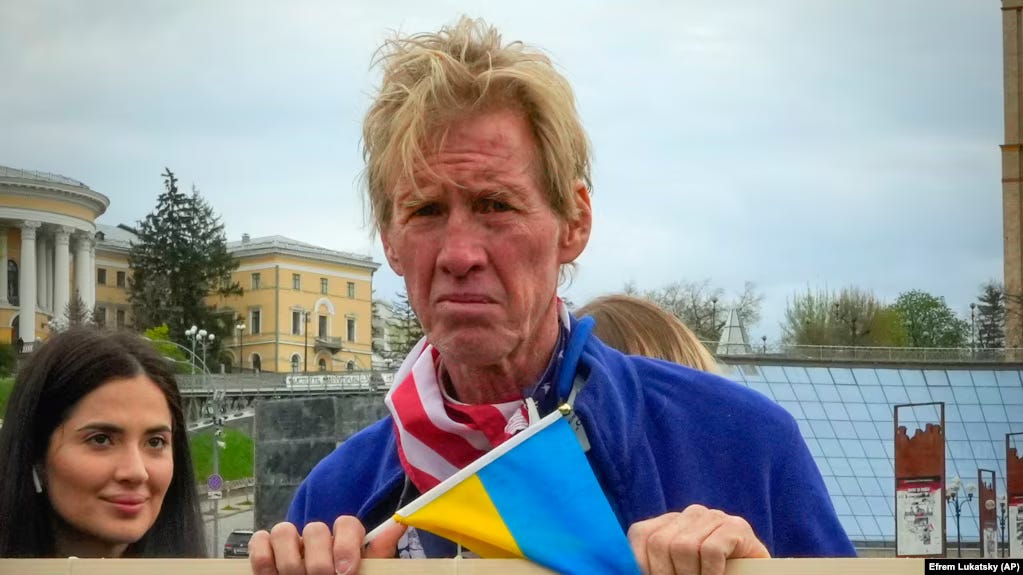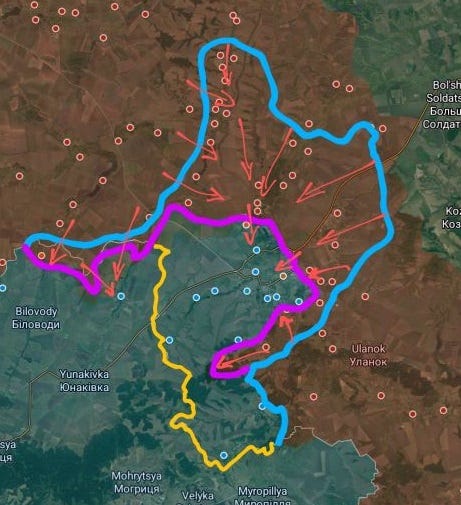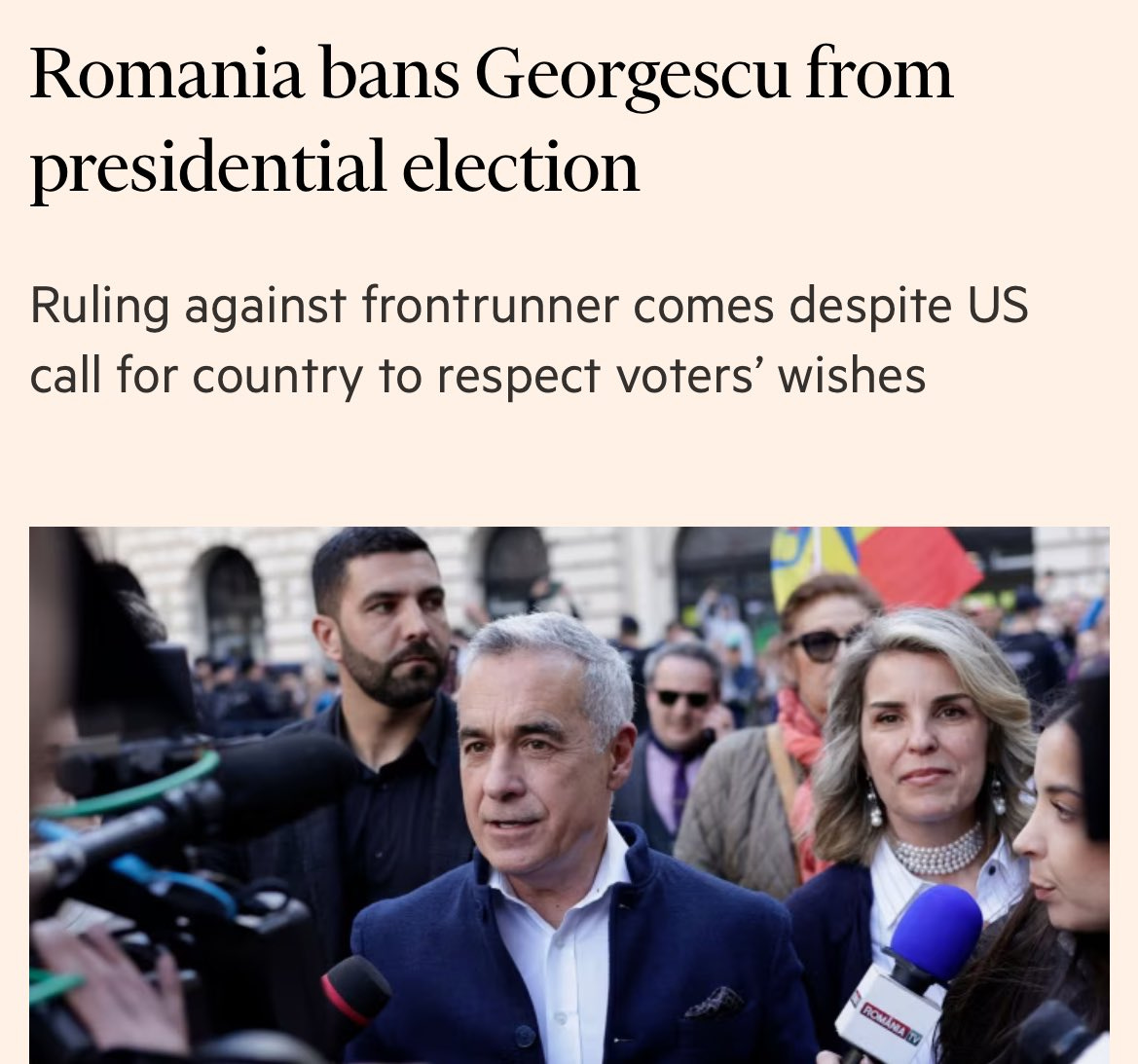Years of Dread: Part I – The Gathering Storm
Introduction: How a Lost Cause terrorist campaign, emerging from Ukraine’s looming defeat, threatens the US and EU—but in radically different forms
On February 28, 2025, the Oval Office turned operatic—Donald Trump and Volodymyr Zelensky faced off, their words sparking like live wires. Diplomacy dissolved into a televised shouting match, laying bare the simmering tension of a war nearing its end. Zelensky set the tone, not with an admission of defeat, but with a cryptic warning.
"During war, everybody has problems, even you," he said, addressing America directly. "But you have a nice ocean and don’t feel it now, but you will feel it in the future."
Was it a lament? A prophecy? Or something darker? The words hung in the air like a charged current—vague yet menacing. What “problems” would America face? Was this a warning, or a veiled threat? Trump, sensing the weight of the moment, snapped back:
"You don’t know that. Don’t tell us what we’re going to feel. We’re trying to solve a problem. Don’t tell us what we’re going to feel."
Zelensky pressed on: "I’m not telling you, I am answering…"
J.D. Vance interjected: "That’s exactly what you are doing…"
Trump, his voice rising: "You’re in no position to dictate what we’re going to feel. We’re going to feel very good and strong."
But strength is easier proclaimed than sustained, especially when the unresolved trauma of a Lost Cause blows back against its benefactor. Zelensky’s warning, delivered in the passive voice, left its agent unspoken. Who exactly would bring these “problems” to America? Russia? But why would Moscow sabotage its own geopolitical triumph? Or was the spectre of revenge—ultranationalist remnants of the Azov Brigades—already being summoned?
The Lost Cause Menace
In a 2014 article, The Guardian highlights the complex role of far-right groups like the Azov Battalion in Ukraine’s conflict. These fighters, many of whom hold neo-Nazi or ultranationalist ideologies, have been instrumental in defending blood and soil in Ukraine against Russian-backed separatists, showcasing their military effectiveness and commitment to the nation’s survival. However, their prominence also poses a significant risk to Ukraine’s future. Their extremist views and growing influence within the military and political spheres could destabilize the country, fuelling internal divisions and undermining efforts to build a pluralistic, democratic society.
While they are a strength in the current war, The Guardian warned more than ten years ago their ideological extremism and potential for violence make them a dangerous force in the long term, threatening Ukraine’s cohesion and international reputation.
This tension is further underscored by President Zelensky’s cryptic warning in a September 11, 2023, interview with The Economist. He suggested that curtailing aid to Ukraine would not only prolong the war but also create risks for the West. Millions of Ukrainian refugees in Europe, he noted, have so far “behaved well” and are “very grateful” to their host countries. However, if Europe were to ever turn its back on Ukraine, “there is no way of predicting how the millions of Ukrainian refugees in European countries would react to their country being abandoned.” Zelensky warned Ukraine’s defeat could “drive these people into a corner,” with unpredictable consequences. Zelensky’s warning was clear: if betrayed, these refugees could become a source of instability, even terrorism.
Last week, following the suspension of US military aid and intelligence sharing—albeit “temporary”—the White House appeared to take Zelensky’s warning seriously. Less than a week after his tense Oval Office remarks, Trump floated the idea of revoking temporary protected status for the 240,000 Ukrainian refugees in the U.S. On paper, these refugees seemed like ideal immigrants for Trump’s base—European, Christian, and, as Paul McCartney once sang, Ukrainian women “really knock me out.”
Yet the move raised pressing questions: Was this a pre-emptive strike against a potential threat, or merely a warning to Ukrainian activist networks to stay quiet and grateful? Zelensky’s earlier caution to Trump—that the U.S. would “feel it in the future”—hinted at a darker possibility. Could these refugees, echoing Mao’s dictum, become a “sea” in which Azov-aligned insurgents might swim?
So far, Zelensky’s warning of Ukrainian refugees resorting to violence has not fully materialized, but troubling signs have emerged. In September 2024, Ryan Wesley Routh, a pro-Ukraine militant, was caught stalking Trump on his West Palm Beach golf course. Months earlier, in May, Juraj Cintula pumped three shots into the body of Slovak Prime Minister Robert Fico, a vocal critic of Ukraine aid, declaring his act was “for Ukraine.” Were these lone fanatics, or the first tremors of a burgeoning guerrilla movement? A Lost Cause, forged in betrayal, now emerging and turning to the only path left: vengeance?
Ukraine’s Kursk salient into Russia—a grotesque mulcher of Kiev’s finest, sustained not for strategic goals but by the information warfare delusions of Zelensky and his British advisors—now teeters on the brink. Russia has deliberately kept this “firebag” open, allowing Ukraine to pour warriors and machines into a funeral pyre of its own making. The battle looks lost—but what comes next?
Will it be an inglorious and forgettable rerun of Iraq’s Highway of Death, where retreating forces were annihilated in a rout? Or will it be something more fanatical—a modern-day Masada—the ancient fortress where Judean zealots chose mass suicide over surrender to Roman forces—where defiance turns to martyrdom; firing future vengeance, waged from the shadows?
Consolidating Power in Brussels
As Wolfgang Streeck argues in American Affairs, Ursula von der Leyen, President of the European Commission, has seized the Ukraine war as an opportunity to recentralize and expand the European Union’s authority, binding Germany and other member states into a more cohesive, supranational entity. From the outset of the conflict, von der Leyen positioned herself as the authoritative voice of Europe, declaring Ukraine’s future membership in the EU and leveraging the war to push for deeper integration.
She used symbolic politics—frequent visits to Ukraine, promises of post-war reconstruction, and public commitments to Ukraine’s cause—to create a sense of inevitability around EU expansion and solidarity.
By aligning herself with the U.S. and NATO, von der Leyen also pressured hesitant member states, particularly Germany, to fall in line with her vision. However, her strategy risks overextending the EU, as rapid expansion to include Ukraine and other Russian border states would require sweeping institutional reforms and could destabilize the bloc’s already fragile cohesion.
Von der Leyen’s approach has also politicized the EU’s foundational principles, prioritizing loyalty to the Western alliance over democratic norms. She has censured leaders like Hungary’s Viktor Orbán and Slovakia’s Robert Fico for engaging with Russia, framing dissent as “anti-European.” This week, Romania announced a “Soviet-style” ban on Presidential candidate Calin Georgescu, whose unexpected presidential election first-round win was annulled.
Meanwhile, her push for economic sanctions against Russia, though ultimately damaging to EU economies, was portrayed as a necessary sacrifice for the greater cause of defeating Putin.
Ursula von der Leyen’s “Mission Accomplished” moment arrived in September 2022, when she triumphantly declared that Western sanctions had reduced a “pathetic” Russia to scavenging microchips from stolen washing machines and refrigerators to sustain its war effort. Speaking with the confidence of a leader claiming victory, she framed the sanctions as a decisive blow to Russia’s industrial and military capabilities.
Yet, much like George W. Bush’s infamous aircraft carrier speech in 2003, von der Leyen’s proclamation proved premature. The sanctions failed to cripple Russia as promised, instead inflicting significant economic pain on EU member states, particularly Germany. Last week, von der Leyen announced an ambitious program to fund €800 million in European arms manufacturing, ostensibly to protect the continent from an apparently no longer “pathetic” Russia.
By tying the EU’s future to the Ukraine war, von der Leyen has sought to transform the bloc into a geopolitical player. However, her ambitious agenda risks deepening institutional dysfunction and internal conflict.
According to Wolfgang Streeck, von der Leyen’s strategy may consolidate her power in the short term, but it threatens to exacerbate the EU’s structural weaknesses in the long run. As Project Ukraine descends into the morass of defeat, the question arises: might von der Leyen be tempted to work with extreme actors to further centralize power in Brussels?
Azov Collusion?
It’s clear that both the U.S. political elite and the embattled rainbow War Party—stretching from the blood red of Liz Cheney to the deep blue of Bernie Sanders—share a common interest with Azov: the enemy of Trump is my friend. In the U.S., this alliance is stark and immediate—anyone threatening Trump’s life becomes an unwitting ally of the establishment center.
In Europe, the dynamic is more delicate and would need to be carefully managed. A revenge campaign by Azov against Europe’s nationalist forces—Viktor Orbán, Robert Fico, Marine Le Pen, and Alice Weidel—disguised under the false flag of Russian influence, could spark a crisis that arguably, only a powerful, centralized institution like the EU could resolve. But this would require the EU to develop robust intelligence capabilities, both domestic and foreign. Such a Strategy of Tension was famously employed in Cold War Italy to deepen Rome’s integration into NATO, and a similar playbook could be used to strengthen the EU’s authority tomorrow.
But Western leaders are moral superpowers, the critic protests. Surely they would not tarnish their carefully constructed mantles of virtue by aligning with Lost Cause fanatics?
Lost Causes in Syria
Syria today is the battleground of two Lost Causes, temporarily aligned in their war against common enemies. On one side stand the jihadi graduates of Al-Qaeda’s terrorist university, the remnants of a shattered jihadist dream. They fight to resurrect the Rashidun Caliphate and purge the Levant of those they deem apostates—Christians, Alawites, and Shiites. Their struggle is one of ideological purity, a desperate bid to reclaim a lost golden age.
On the other side is Turkish President Recep Tayyip Erdoğan’s neo-Ottoman vision—not a revival of the ancient Caliphate, but a modernized empire with Turkey at its helm, reclaiming influence over its former dominions. Among these is the Ottoman Sanjak of Jerusalem, a historical administrative region that today includes parts of modern Israel. This overlap sets the stage for a potential clash, should either Lost Cause forces—rebranded Al Qaeda’s or Erdoğan’s—seek to assert their claims in the region.
These two forces—one Salafi, the other Turkish imperialist—differ in their ultimate goals, but for now, they share a brutal, immediate cause: the eradication of any remnants of Assad’s regime. The West, ever pragmatic, chose to align with these Lost Cause militants, as it has so often done in the past, leveraging their fanaticism as a tool to take Damascus.
For the past ten years, Tulsi Gabbard was practically crucified for pointing out the danger of dealing with such jihadi devils. Now Abu Mohammad al-Julani has transitioned from Al-Qaeda militant to our man in Damascus as the bodies of Christian and Alawite civilians pile high in Western Syria.
Years of Dread
It’s clear why America’s embattled rainbow War Party—stretching from the blood red of Liz Cheney to the deep blue of Bernie Sanders—shares an interest with Azov: a common enemy in Trump. Given the War Party’s history of collaborating with unsavoury Lost Cause actors, it’s not a stretch to imagine them, at the very least, tacitly celebrating any successful Azov operations on U.S. soil.
Why Ursula von der Leyen might benefit, under certain conditions, from a more indirect and ambiguous Azov-led false flag campaign is far more complex. Understanding this dynamic—and how defeat in Ukraine could spiral into yet another of history’s tragic Lost Causes—is the central aim of this study.
In this series of articles, I will explore the theory, history, and potential manifestations of two distinct types of Azov-fueled terrorist campaigns emerging from Ukraine’s defeat: one active and direct, the other ambiguous and indirect.
This article, Years of Dread: Part 1 – The Gathering Storm, describes the current state of play, while subsequent articles will anchor today’s events within a historical and theoretical foundation, seeking to provide deeper insight into the forces shaping Ukraine’s post-defeat trajectory.
The next article, Years of Dread: Part 2 – Lost Causes, will examine the psychological roots and historical varieties of Lost Cause reactions to military loss. From France’s defeat in 1871 to Prussia, to Germany’s humiliation in World War 1, and including the Civil War South, this analysis will trace the recurring patterns of defiance, martyrdom, and vengeance that emerge in the wake of catastrophic loss. These examples will provide a framework for understanding where Ukraine is headed in the aftermath of what it will perceive as a dagger in the back by the West.
Following this, using Basil Liddell Hart’s distinction between direct and indirect warfare; I will analyse Italy’s Years of Lead, a period defined by a Strategy of Tension. Here, Marxist-Leninist factions employed direct tactics, while neo-fascists cells operated through false flags and provocation, together conjuring a fog of fear. Though ideological opponents, their dual campaigns converged to push Italy firmly into NATO’s embrace. I will argue that this Italian model may serve as a prototype for a Years of Dread campaign waged in Europe to push power towards Brussels.
In the concluding article, I will contrast two giants of American regime change and election manipulation operations: the direct, brazen approach of Victoria Nuland, assisted by Azov in Ukraine (2014) with the shadowy, indirect tactics of James Jesus Angleton, relying on help from the mafia in Italy (1948).
I will explore how Donald Trump has already initiated an internal Strategy of Tension in America, leveraging division and chaos to consolidate change. Azov, if it emerges as a force, will seek to amplify this resonant oscillation, pushing the Trump Administration to the brink of collapse.
Azov’s goal will be centrifugal—to pull power away from Silicon Valley and the Trump Administration through a campaign of personal terror, destabilizing the political center and fragmenting the nation’s cohesion.
In Europe, however, the Strategy of Tension will operate as a centripetal force, designed to pull sovereignty away from nation-states and toward the centralized authority of Brussels. As the EU consolidates military, intelligence, and financial power, the dream of restoring Ukraine’s 2014 borders will grow.
Redeeming Ukraine will serve as both a rallying cry and a justification for further centralization, with the EU and Azov sharing a common vision in positioning Brussels as the indispensable, messianic force driving a new European order—driven by the allure of a free and prosperous Ukraine standing as the eastern bulwark of this reimagined continent.










I’ve predicted the same thing- Ukrainian Terrorism in Europe after the Ukraine falls. They did sacrifice over a million men, under the promise that the West “would be with them till the end”, which every student of US history knows is a virtual death sentence! Also, as an aside, I get a warning about “malware” when trying to comment on the article itself… odd!
«These fighters, many of whom hold neo-Nazi or ultranationalist ideologies, have been instrumental in defending blood and soil in Ukraine against Russian-backed separatists»
Their pride is to have defended the "soil in Ukraine" of the Donbas and Crimea that they believe belongs to the people of Volhynia and Galicia, not to the people of Donbas and Crimea who are in their eyes not pure aryan slavs but tatar-slav mongrels who have only been squatting there without the permission of the people of Volhynia and Galicia and without paying rent to them for just a few hundred years.